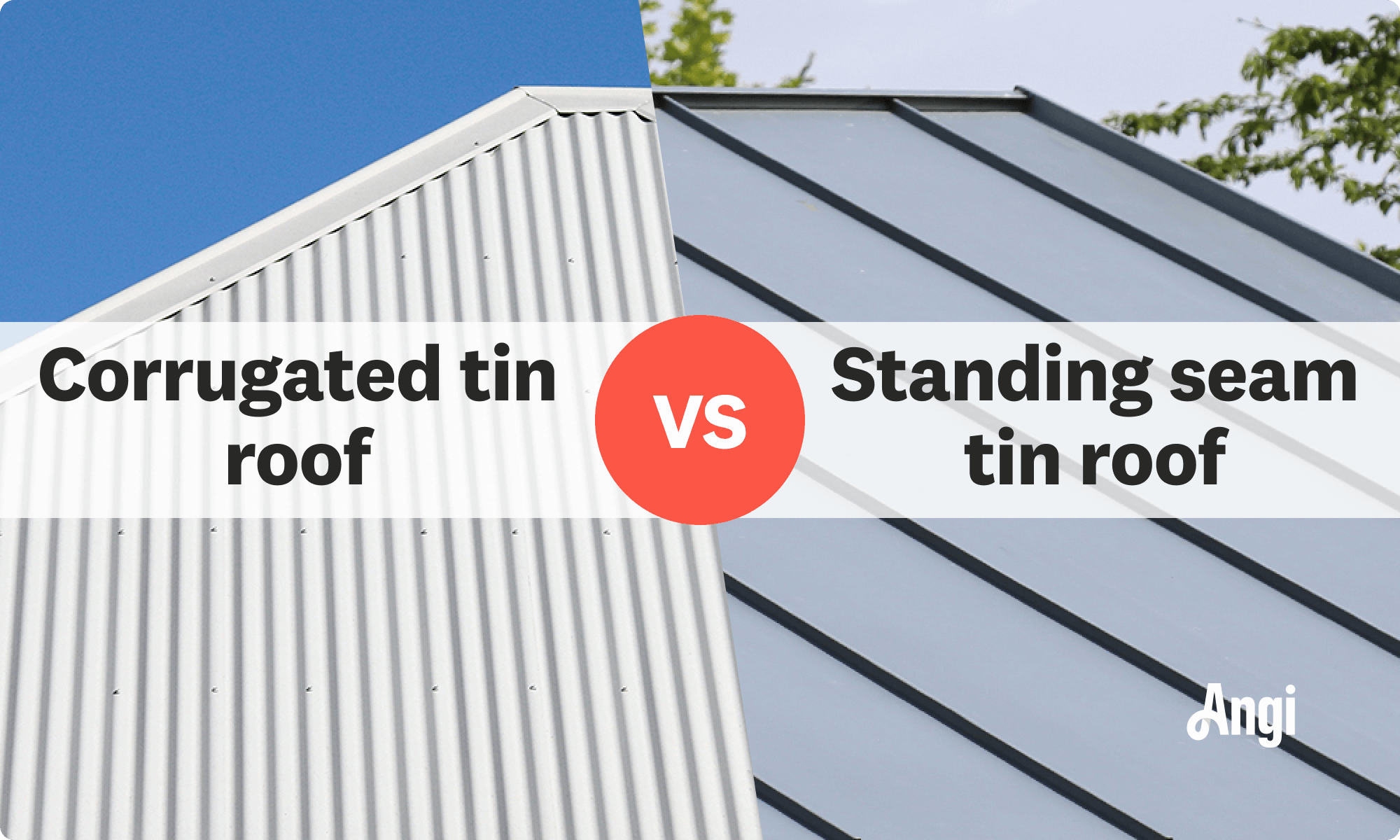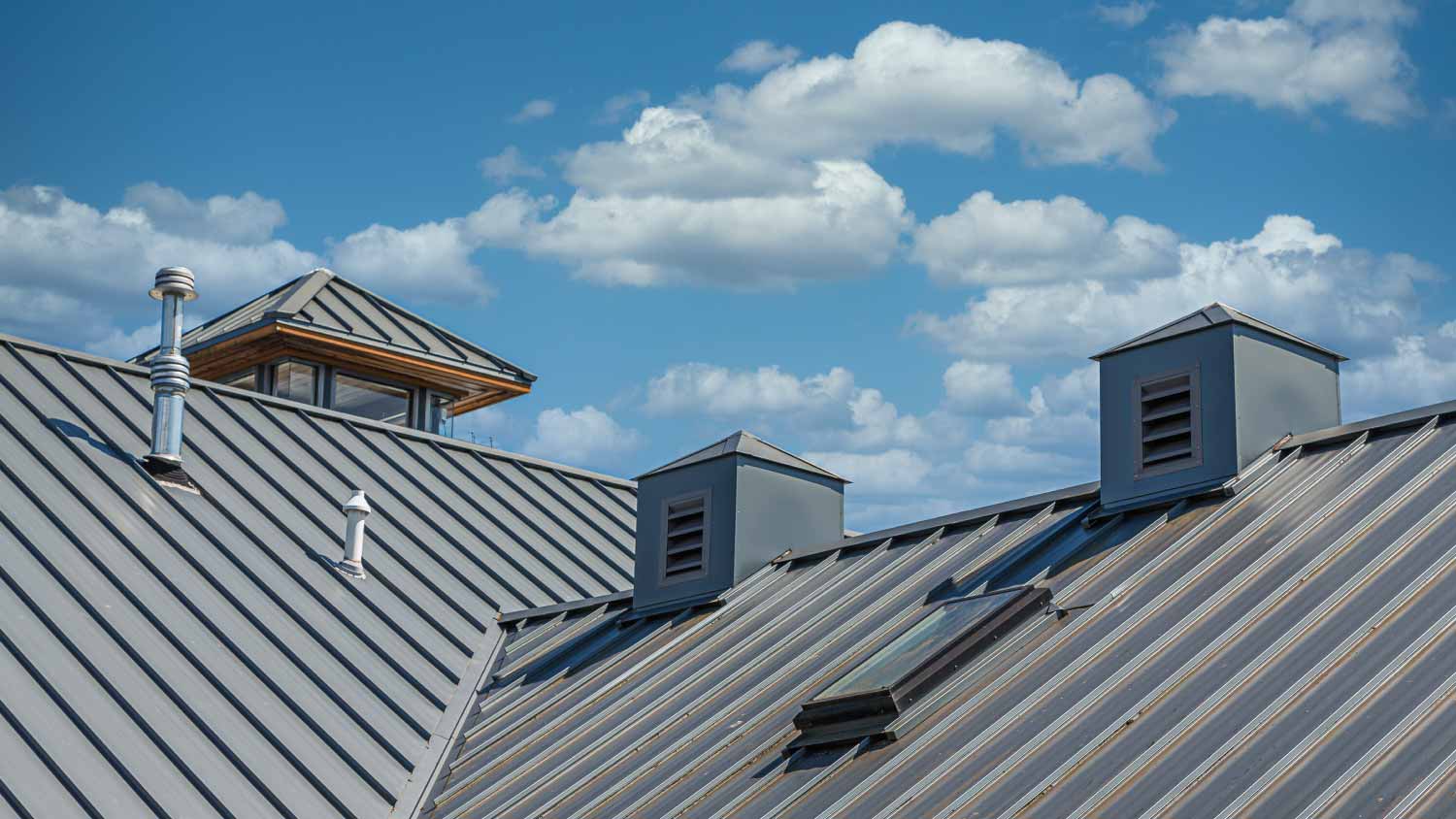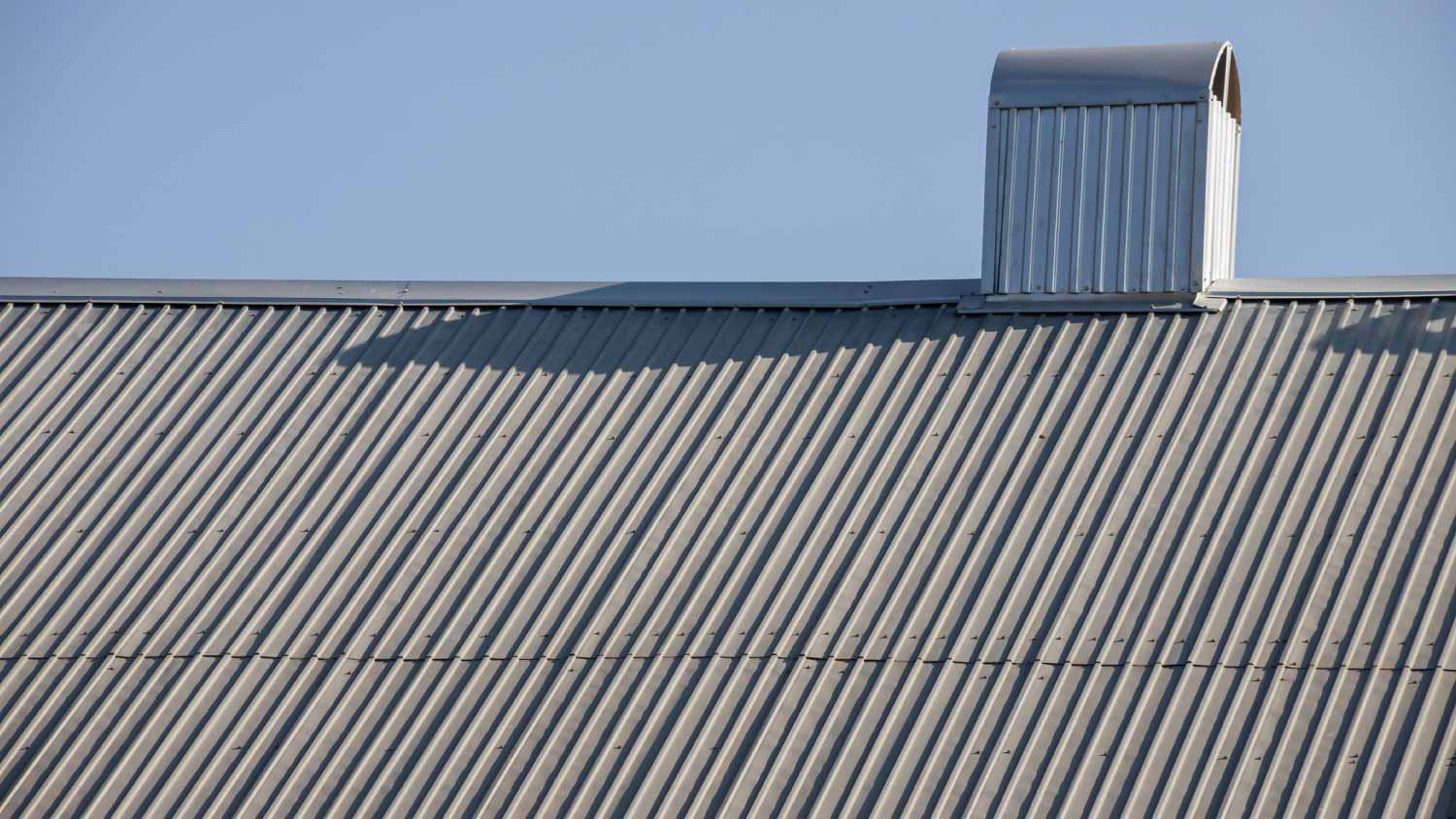What’s the Difference Between Standing Seam and Corrugated Metal Roofs?
Get the low down on these two popular metal roofing options


Standing seam roofs have a lower risk of leaking because all of their hardware is protected and concealed.
Corrugated metal roofs are more affordable, but many prefer standing seam for their greater curb appeal.
Standing seam roofs last 10 to 15 years longer and require less maintenance in areas with above-average precipitation.
Metal roofs come with pros and cons, but if you’ve made up your mind to get one, odds are you’re probably discovering that there are quite a few options available. Two of the most popular are standing seam and corrugated metal roofs, and although they appear to have a lot in common, there are a few key differences to understand before you choose. In this guide, we’ll explain everything you need to know about standing seam versus corrugated metal roofs to help you pick.
Standing Seam vs. Corrugated Metal Roofs: Key Differences

Standing seam metal roofs consist of flat, wide, vertical panels that interlock through a series of ridges or standing seams (hence the name). This setup conceals all the fasteners, screws, and bolts used during installation, protects them from the elements to reduce leak risks, and gives the entire roof a longer lifespan.
Corrugated metal roofing also consists of large metal sheets, but the fasteners are visible from the ground, and the panels have a wavy design. Although it’s more affordable up front, the exposed fasteners in this type of metal roof make it less visually appealing and leave you with a higher risk of leaks and more maintenance over time.
What Is a Standing Seam Metal Roof?

What sets standing seam metal roofs apart are their unique standing ridges that interlock numerous panels to create a sleek and uniform appearance. It’s also this mechanism that protects the fasteners from the elements, reducing the risk of roof leaks and improving curb appeal—but you can expect to pay more for this style, as the installation is more intensive.
| Pros | Cons |
|---|---|
| Less maintenance | More expensive |
| Longer lifespan | Harder to DIY |
| Better curb appeal | Less insulative |
| Leak resistance | Noisier in rain |
Best for:
Those willing to spend a little more on a metal roof with a more appealing design.
Homes that see a lot of precipitation that increases the risk of roof leaks.
Pros of Standing Seam Metal Roof
The most appealing benefit of a standing seam metal roof is the fact that all its fasteners, screws, and bolts are concealed, which helps prevent deterioration from external forces like rain or snow. Plus, because of the way the panels interlock, leaking from wet weather and warping from hot and cold temps—the kind of issues that cause the most damage—are less likely to happen in the first place.
As a result, standing seam metal roofs last longer—from 50 to 75 years with proper maintenance—and the maintenance is easier on your wallet in the long run, with just annual roof inspections necessary.
Most homeowners prefer the sleek look of a standing seam metal roof, meaning better curb appeal and more value added to your home.
Cons of Standing Seam Metal Roof
The biggest downside to a standing seam metal roof is that the up-front cost is higher. When you hire a roofer to install one, you’ll pay twice as much as corrugated metal roofs due to the higher material costs and the added labor to hide all of the fasteners.
Standing seam metal roofs sit flatter than corrugated panels, which means they provide less insulation. This is a drawback to consider in extreme climates, and it could mean slightly higher heating and cooling bills unless you pay more for insulation under the panels. You’ll get less noise insulation during rainfall, too.
Finally, standing seam metal roofs are harder to install, making DIY metal roof installation more challenging.
What Is a Corrugated Metal Roof?

As the name suggests, corrugated metal roofing is corrugated, so it has channels running up each roof slope. Your roof installer will screw the fasteners directly through the metal, so they’ll be visible from the ground and remain exposed to rain and snow.
| Pros | Cons |
|---|---|
| More affordable | Higher leak risk |
| Easier to DIY | Less appealing |
| More insulation | More maintenance |
| Dampens rain noise | Shorter lifespan |
Best for:
Those looking for an affordable metal roofing option.
Homeowners looking to DIY their metal roof installation.
Installation on outbuildings, like sheds.
Pros of Corrugated Metal Roof
Corrugated metal roofs are more affordable because they’re easier to install. This also makes them a more suitable option for DIYers.
The larger channels provide a bigger pocket of air between your roofing and your roof deck, which means better insulation for your home. As such, this type of metal roof can help keep your home cool and reduce heating and cooling bills in extreme temperatures. The larger voids also mean slightly less interior noise during rainfall.
Cons of Corrugated Metal Roof
Corrugated metal roofs don’t last as long as standing seam metal roofs. You’ll get 30 to 60 years out of it before it’s time to look for a replacement, which is 20% shorter than a standing seam roof. During that time, you’ll also need more maintenance to ensure the rubber washers protecting the fasteners don’t loosen and lead to leaks. The risk of leaks is higher due to the exposed fasteners, so this style isn’t ideal in areas that see heavy rainfall or above-average snowfall.
Corrugated metal roofs are less visually appealing, so while any metal roof will boost home value, you’ll see less value from this style.
Standing Seam vs. Corrugated Metal Roofs
There are a few key things to consider before deciding between a standing seam vs. a corrugated metal roof.
Appearance: Standing Seam Metal Roof
Most homeowners prefer the sleek, uniform appearance of standing seam roofs with hidden fasteners. This style will add more curb appeal and value to your home.
Options and Customization: Tie
Both roof options come in many different sizes, metal options, and colors, so there’s room to customize regardless of which option you choose.
Durability: Standing Seam Metal Roof
The exposed seams on a corrugated metal roof put them at a greater risk of damage and decay than standing seam metal roofs. Aside from hiring a metal roofing contractor near you for occasional inspections, there’s not much else you need to do to keep the latter looking good and functioning as it should.
Price: Corrugated Metal Roof
The cost of standing seam metal roofing ranges from $7 to $30 per square foot, which puts the average roof replacement cost at $33,300. A corrugated metal roof costs between $3.50 and $15 per square foot, or $15,200 for an average-size roof. If you’re limited by budget, corrugated metal roofing is the better option.
Maintenance: Standing Seam Metal Roof
Aside from periodic cleanings and checkups from a pro, there’s not much you need to do to maintain a standing seam metal roof, thanks to the fact that all its hardware is hidden safely below its seams. Corrugated metal roofs need occasional hardware replacement in addition to routine roof inspections.
Length of Life: Standing Seam Metal Roof
A standing seam metal roof lasts for up to 80 years, while you’ll only get up to 60 years of life from a corrugated metal roof before you need to think about replacement.
How to Choose the Right Roof for You
The first thing you should consider is the cost of roof replacement. If you’re on a tight budget, a corrugated metal roof is the better option, as it’s half as expensive. Since you’ll get more than half of the lifespan you would from a standing seam roof, you ultimately get more value for your money, too.
Next, think about the climate in your area. Standing seam metal roofs stand up better to rain and snow and have a lower risk of leaking, so it’s a better option in areas that see above-average rainfall and snowfall.
Finally, consider curb appeal and maintenance. For the nicest-looking roof with less ongoing maintenance needs, splurge on a standing seam metal roof.





- Roofers
- Metal Roofing
- Roof Repair
- Roof Inspection
- Vinyl Siding Repair Contractors
- Flat Roofing Companies
- Commercial Roofing
- Emergency Roofing Companies
- Leaky Roof Repair
- Metal Roof Repair
- Business Roof Repair
- Flat Roof Repair
- Tile Roof Repair
- Slate Roofers
- Rubber Roofers
- Roofing & Siding
- Metal Roof Installation
- Affordable Roofing
- Roof Sealing
- Attic Ventilation Contractors










